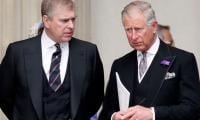KARACHI: The US ratings agency Standard and Poor’s on Monday lowered Pakistan’s credit rating to ‘B-’ from ‘B’ on the diminished growth prospects as well as elevated external and fiscal stresses.
“We lowered the ratings to reflect our more subdued expectations for Pakistan’s economic growth, along with heightened external and fiscal risks, amid an ongoing deterioration in the country’s broad macroeconomic settings,” S&P Global Ratings said in a statement. It lowered the long-term issue rating on senior unsecured debt and Sukuk trust certificates to ‘B-’ from ‘B’.
The credit ratings agency, however, affirmed its ‘B’ short-term sovereign rating. “The stable outlook reflects our expectations that Pakistan will secure sufficient funding to meet its external obligations in the next one to two years.”
S&P said the country’s economic outlook and its external position have deteriorated well beyond its previous expectations. With the weaker economic settings, and limited progress in addressing fiscal imbalances following elections in mid-2018, “we believe prospects for a rapid recovery in fiscal and external settings are now diminished”.
“More modest growth prospects and limited reserve buffers will continue to challenge the country’s external position, even as the government receives financial aid from various partners,” it added. “Negotiations with the IMF have taken longer than anticipated, and we now believe the reform timeline will be more protracted in nature.”
The government’s protracted negotiations with the IMF suggest that any resulting reforms, whether under the programme or otherwise, will be less expedient than previously anticipated.
“We may raise our ratings on Pakistan if the economy materially outperforms our expectations, strengthening the country’s fiscal and external positions,” the ratings agency said. “Conversely, we may lower our ratings if Pakistan’s fiscal, economic, or external indicators continue to deteriorate, such that the government’s external debt repayments come under pressure. Indications of this would include GDP growth below our forecast, or external or fiscal imbalances higher than what we expected.”
S&P expected fiscal and external imbalances to remain elevated despite financial supports from Saudi Arabia and UAE.
“Pakistan is facing considerable external and fiscal pressure following a significant rise in both the general government fiscal and current account deficits in the fiscal year ended June 2018,” it said. “These metrics have deteriorated since the completion of an extended funding facility reform programme with the IMF in September 2016, leading the current government to seek financial and technical assistance from a variety of bilateral and multilateral parties.”
S&P’s estimates the country’s GDP per capita at just over $1,500 in 2018, which is at the bottom i.e. 10 percent of all sovereigns rated by S&P Global Ratings.
“We have revised downward our forecast of annual real GDP growth to an average 3.6 percent over 2019-2022,” it said.
“Pakistan’s per capita GDP growth is somewhat lower, at about 1.5 percent due to a fast-growing population. Our weaker growth projections mainly reflect the diminishing stimulatory impact of the investments associated with the CPEC (China-Pakistan Economic Corridor), negative fiscal impulse as the government looks to rein in its deficit, and declining economic sentiment.”
CPEC energy projects are unlikely to sufficiently offset the loss in momentum in the economy during this period of acute fiscal and external stress.
The ratings agency said growth will also be constrained by domestic security challenges and long-lasting hostility with neighbouring India and Afghanistan.
“These conditions, along with inadequate infrastructure, mainly in transportation and energy, are additional bottlenecks to foreign direct investments.”
S&P said pressure on external accounts will rise further in 2019.
“We forecast net general government debt to rise towards 70.2 percent of GDP by the end of fiscal 2022, with slower GDP growth and still-elevated deficits,” it said. “Likewise, Pakistan’s interest-servicing burden will remain elevated, at an average of 32.4 percent of revenues.”
Current account deficit widened again to 6.1 percent of GDP in the fiscal year ended June 2018, from 4.1 percent the year before and just 1.7 percent in 2016.
“Although we expect the current account deficit to decline somewhat over the next two years with energy prices falling and the economy slowing, Pakistan’s external financing and indebtedness metrics remain stressed,” the ratings agency said. The country’s gross external financing needs relative to its current account receipts and useable reserves are expected to climb to 151.1 percent at the end of fiscal 2019, versus approximately 131 percent in the previous year.
“We project the country’s narrow net external debt will rise to more than 170 percent of current account receipts, from just below 140 percent in the prior year,” it added.
The ratings agency said the government led by Pakistan Tehreek-e-Insaf party has yet to introduce fiscal measures that are sufficient to bring about a substantial improvement in the general government deficit.















